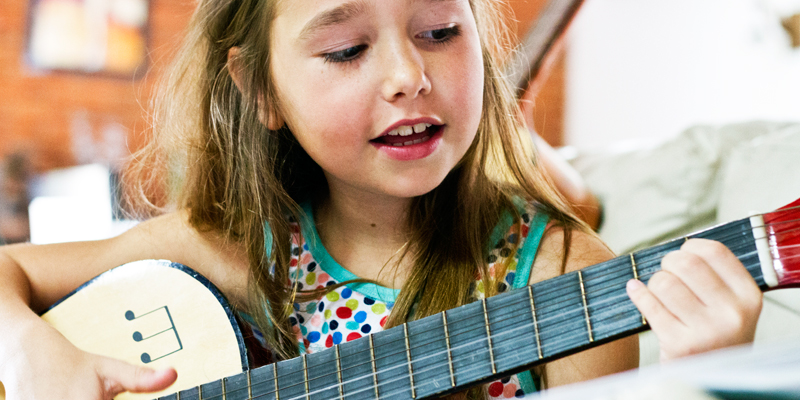
Music to His Ears: Teaching Your Child Musical Concepts
Your child has very likely been enjoying music with you since his earliest days. Some of the active listening activities that you’ve shared include singing, dancing, and moving to the music. Perhaps he’s even enjoyed playing simple instruments. With all this music in his environment, he is now beginning to understand some basic musical concepts, such as tones (i.e. notes), tempo (i.e. the pace of the music), and genre. He can clap or drum to the beat of the music and sing along with many favorite songs. Listening and interacting with music is great for children of all ages, supporting areas of learning that seem completely unrelated. Language and problem-solving skills are enhanced and new connections are made in the brain. Playing an instrument will help to improve fine motor skills and, of course, listening to music just makes people happy. Make music a part of your child’s daily experience!
(Playful Bee is launching our new DIY Preschool from Birth program! Click here to enroll.)
Play Tips:
How can you support your child’s development of this Musical Concepts skill at this age? It’s as easy as 1-2-3.
- Practice different tones and pitch. Make up a simple sentence with your child, and then try to see how many different ways you can say it. You could try softly vs. loudly or slowly vs. quickly. You could also sing the sentence on different notes or get silly and say the words with lots of vibrato (i.e. a pulsating effect made by small and quick changes in pitch)!
- Play with patterns. Try playing with some music patterns. Make a rhythm pattern by clapping, stomping, shaking a shaker, etc., and then ask your child to imitate it. Act as leader for several turns, and then invite your child to be the leader once he gets the hang of it.
- Try a new movement activity. Want to try something besides dancing to the beat of a song? There are many other musical movement activities you can try! Listen to some favorite songs as you and your child make up the rhythm section of the band by using percussion instruments or common household objects, such as pot lid cymbals, pot and spoon drums, or bean-filled jars for shakers. Play a game with beats: have your child move very slowly, or even pretend to sleep, when you play a slow beat, but wake up and dance around when you play a fast beat. You can also look for songs that have actions, such as “Going on a Bear Hunt,” “I’m a Little Teapot,” or “Oats and Beans and Barley Grow.”
Developmental Milestones:
Has your baby achieved the following Musical Concepts developmental milestones yet? If yes, check off all the skill(s) he has already mastered to date using Playful Bee’s developmental milestones tracker. It’s absolutely FREE and easy to use, just click HERE!
- Likes to sing, dance, and act.
- Can understand basic music principles (e.g. tone, tempo, genre).
Playful Bee
Latest posts by Playful Bee (see all)
- Have a Super Fortune Cookie Friday! - February 9, 2018
- All Kinds of Shapes: Your Child Is Learning Simple Shapes, and Drawing Them Too! - November 13, 2017
- Fishing for Sneakers: Create your own Hand-Eye Coordination Fun - November 11, 2017

+ There are no comments
Add yours